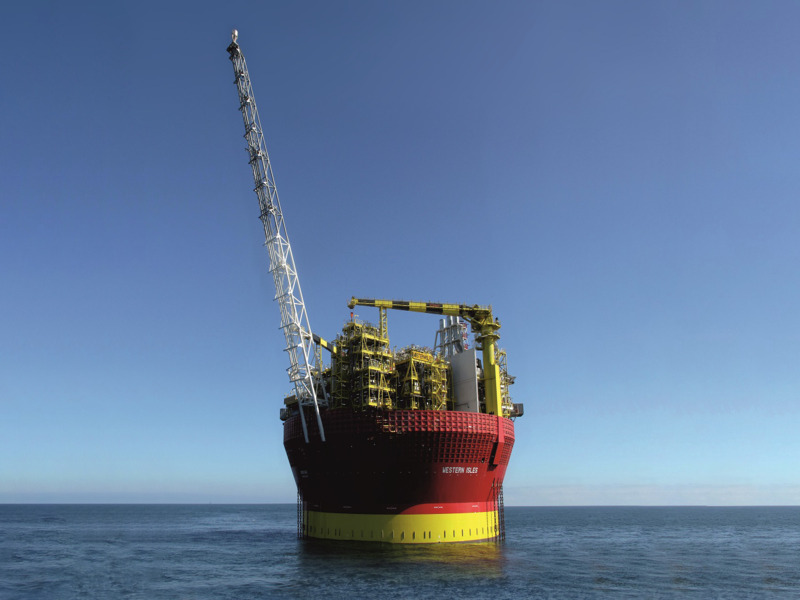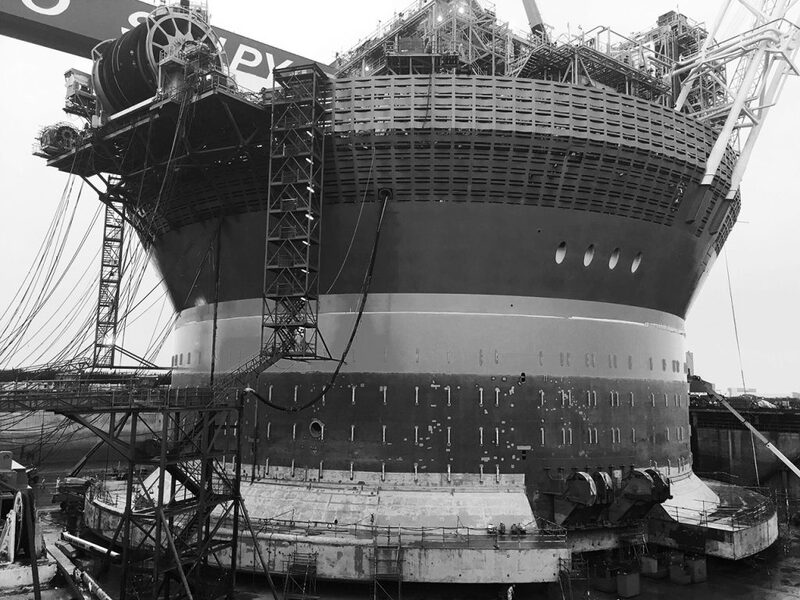The Western Isles Floating Production and Storage Offloading (FPSO) vessel is located in the Northern North Sea, UK. The FPSO vessel produces from two oil fields called Harris and Barra.
In March 2023, Dana Petroleum (E&P), a subsidiary of Dana Petroleum, submitted a draft decommissioning programme for the Western Isles FPSO and associated systems to the UK's Offshore Petroleum Regulator for Environment and Decommissioning (OPRED).
Overall, the decommissioning will include one vessel and ancillary infrastructure including 12 mooring lines (3 groups of 4 lines); nine flexible risers and two dynamic umbilicals.
Korea National Oil Corporation-subsidiary Dana Petroleum operates the vessel with a 76.9188% stake. Neo Energy, an energy business focused on the UK Continental Shelf (UKCS), holds the remaining 23.0812% interest.
Project Gallery
-

The Western Isles FPSO is located in the Northern North Sea. (Credit: Petrofac/ Dana Petroleum)
-

Dana Petroleum (E&P) submitted a draft decommissioning programme for the Western Isles FPSO and associated systems in March 2023. (Credit: © Orga BV)
-

The FPSO is in operation since November 2017. (Credit: © Orga BV)
The FPSO is in operation since November 2017. The Western Isles development entailed an investment of around $2bn.
Location details
The Western Isles produces from Harris and Barra fields which are tied back to the FPSO. The fields are located in Block 210/24a, the United Kingdom Continental Shelf (UKCS).
The assets are situated around 90km to the North East of Shetlands, 5km south of Hudson Field, and 12km west of Tern Platform.
The water depth in the region ranges from approximately 150m to 165m and the reservoir depth of 6,000ft.
Western Isles FPSO details
The Western Isles FPSO was built and completed by COSCO Shipyard Group in Qidong, China. It has a storage capacity of 400,000 barrels of oil (bbls) and an oil production capacity of 44,000 barrels of oil per day (bopd).
The vessel, which weighs more than 28,000 tonnes, features a Sevan Series 400 cylindrical monohull, designed especially for the high wave heights and wind speeds at the Harris and Barra oil fields.
The diameter of the hull is 70m and it is compartmentalised into ballast tanks, cargo tanks, clean and dirty slops tanks and other utility systems such as open drains, diesel and potable water.
The Western Isles features 17 riser slots and can offload at a rate of 3500m3/hour.
When installed at the site, the FPSO had a design life of 20 years.
The Harris and Barra fields were developed using the FPSO. The oil recovered is transported using shuttle tankers while excess gas is exported through a pipeline to the Tern-North Cormorant Gas Pipeline.
However, gas has been imported continuously to balance production deficit, due to the fall in production.
The FPSO is tied back to the subsea facilities by two subsea pipeline bundles and flexible risers.
The operation at the development includes the injection of water to maintain reservoir pressure and gas lift to assist production.
The fields’ injection and production wells are concentrated around the North Drill Centre (NDC) and the South Drill Centre (SDC).
Western Isles FPSO decommissioning details
The draft decommissioning programme document includes two decommissioning programmes (DPs).
The proposed decommissioning will include the full removal of the FPSO, flexible risers, dynamic umbilicals and the upper sections of the mooring lines to and including the lower H-shackle, excluding the bottom chain and anchors.
The FPSO will be disconnected from its risers and mooring system.
After it is disconnected, the Western Isles FPSO will be towed to shore for potential reuse. The vessel will be recycled or disposed, if it is not reused.
The mooring lines will also be recovered for reuse and recycling. The FPSO mooring lines’ upper sections will be lowered to the seabed and then recovered during the FPSO sailaway campaign. The lower section of the chain connecting the anchor piles will be removed later.
The removal of mooring lines will eliminate obstruction to fishing operations.
The decommissioning will also involve the removal of the flexible risers and dynamic umbilicals by disconnecting them at subsea and from FPSO. Subsequently, these assets will be transported onshore for reuse, recycling or disposal.
The risers and umbilicals may be temporarily wet stored for future recovery, if their decommissioning is deemed not feasible during FPSO sailaway.
In this case, a guard vessel will be on the location after sailaway to prevent hazards for other sea users.
The removal of the risers and umbilicals will clear the seabed and water column.
The decommissioning of the FPSO is not expected to have any impact on third parties or pipelines.
Once the FPSO is removed, safety measures will be taken to protect the Midwater Archs (MWAs) and other subsea infrastructure.
Before FPSO disconnection, well integrity testing will be conducted and monitoring will be completed through ROV inspections before the commencement of the wells Plug and Abandonment (P&A) operations.
According to the draft decommissioning programme document, Dana will employ environmentally acceptable methods to manage waste generated during the decommissioning of the FPSO and associated assets.
The FPSO preparation and sailaway activities are expected to begin in late 2023, subject to commercial agreements and contracts.
Contractor Involved
In October 2022, energy services company Petrofac won a contract extension from Dana Petroleum for well management services regarding Western Isles FPSO and Triton FPSO vessels.
The scope of the contract includes full life cycle well engineering from concept to detail designing, planning, intervention, supporting well construction, and decommissioning activities.
The $60m contract includes options for extension.
